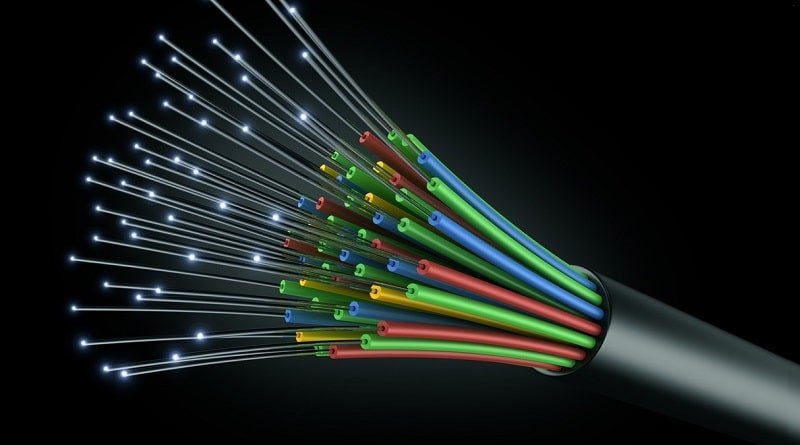1. Executive Summary
The optical fiber market in the telecom sector is experiencing rapid growth, driven by the increasing demand for high-speed internet, the rollout of 5G networks, and the expansion of fiber-to-the-home (FTTH) infrastructure. As the backbone for modern telecom networks, optical fiber offers unmatched bandwidth, low latency, and reliability. The global optical fiber telecom market was valued at USD 12.4 billion in 2023 and is projected to reach USD 24.8 billion by 2030, growing at a CAGR of 10.6%. Key drivers include the proliferation of connected devices, data-driven services, and government initiatives promoting fiber adoption.
2. Market Overview
Growth Drivers:
- 5G Deployment: 5G infrastructure requires fiber optics for high-speed backhaul, supporting higher frequencies and lower latency.
- Fiber-to-the-Home (FTTH): The transition from copper to fiber for residential broadband, with FTTH deployments growing significantly across developed and developing markets.
- Data Explosion: The exponential growth in data traffic due to streaming, cloud services, IoT, and enterprise applications increases the need for higher capacity fiber optic networks.
- Government Initiatives: National broadband plans and infrastructure funding in regions like the EU, U.S., and Asia-Pacific are accelerating fiber optic adoption.
Challenges:
- Cost of Installation: High initial investment required for fiber infrastructure, especially in rural and underserved regions.
- Network Integration: Integrating new fiber optic infrastructure with legacy copper and hybrid networks can be complex and costly.
- Right-of-Way and Regulatory Approvals: Obtaining necessary permits and access to land for fiber cable installation can delay deployments, especially in urban areas.
3. Key Trends
- FTTH and Fiber-to-the-Building (FTTB): As demand for higher bandwidth services rises, telecom companies are aggressively expanding FTTH and FTTB networks.
- Optical Fiber for 5G Backhaul: The rollout of 5G networks is boosting demand for optical fiber backhaul solutions, as fiber can support the higher data rates required by 5G.
- Next-Generation Optical Networks: Technologies like Dense Wavelength Division Multiplexing (DWDM) and Coherent Optical Communication are increasing fiber capacity, enabling telecom operators to carry multiple high-capacity data streams over the same fiber.
- Sustainability and Green Networks: Telecom providers are exploring energy-efficient fiber optics and environmentally friendly installation practices as part of their sustainability initiatives.
4. Market Segmentation
- By Fiber Type:
- Single-Mode Fiber (SMF) (80% share): Dominates long-distance telecom networks, supporting high-capacity, high-speed transmission over long distances (100km+).
- Multimode Fiber (MMF) (20% share): Primarily used in short-distance applications such as data centers and local networks, typically under 300 meters.
- By Application:
- Fiber-to-the-Home (FTTH): A significant share of telecom fiber usage for delivering high-speed internet to residential areas.
- Fiber-to-the-Tower (FTTT): Increasing demand for optical fiber in 5G small cell backhaul networks.
- Fiber-to-the-Office (FTTO): Used in business environments for high-capacity internal communication networks.
- Core Network Backhaul: Optical fiber plays a central role in the backbone infrastructure of telecom networks, interconnecting switching centers and ensuring high-speed data transfer.
- By Region:
- North America (30% share): The U.S. is a major adopter of FTTH networks, with operators like AT&T, Verizon, and Comcast leading deployments.
- Asia-Pacific (40% share): China’s 5G rollout and India’s rapid telecom infrastructure development are key growth areas.
- Europe (20% share): FTTH and 5G network expansion are driving fiber optic demand, especially in countries like Sweden, France, and Germany.
- Latin America & Middle East & Africa (10% share): Emerging markets are catching up in fiber adoption due to mobile data demand and government-backed infrastructure projects.
5. Competitive Landscape
Key Players:
- Corning Inc.: Leading supplier of optical fiber cables with innovations in high-density fiber solutions.
- Prysmian Group: Offers a wide range of fiber optic solutions, including FTTH cables and high-capacity backbone solutions.
- CommScope: Specializes in fiber optic infrastructure for 5G backhaul and enterprise solutions.
- Sumitomo Electric Industries: Known for its high-performance optical fiber cables for telecom operators and data centers.
- Fujikura Ltd.: Provides advanced fiber optic solutions, focusing on FTTH deployments and 5G backhaul systems.
Strategies:
- Partnerships and collaborations with telecom operators for nationwide fiber deployments.
- Focus on expanding R&D to improve fiber efficiency, bandwidth, and integration with next-gen networks (e.g., 5G, fiber optic sensing).
- Strategic acquisitions to expand product portfolios and regional footprints.
6. Regional Analysis
- North America: The U.S. leads in FTTH penetration, with telecom providers aggressively expanding fiber networks to meet the growing demand for high-speed internet. Government initiatives, such as the American Jobs Plan, are further accelerating the adoption of fiber networks.
- Asia-Pacific: The region is witnessing rapid 5G rollouts in countries like China, Japan, and South Korea. In India, Jio Fiber is a key player, driving fiber adoption across the country. China’s “Digital Silk Road” is significantly increasing demand for optical fiber for telecom backhaul and 5G networks.
- Europe: The EU Digital Strategy and ambitious broadband goals are spurring fiber deployment in countries like Germany, the UK, and France. The adoption of 5G and the push for EU’s Gigabit Society are driving investments in optical fiber.
- Latin America & MEA: Countries like Brazil, Mexico, and South Africa are investing heavily in telecom infrastructure to improve connectivity. Fiber optics are playing a key role in these regions’ efforts to modernize mobile networks and expand broadband access.
7. Future Outlook
- 5G and Beyond: Optical fiber will remain the backbone of mobile networks as telecom companies roll out 5G and begin preparing for 6G.
- FTTH Expansion: Fiber networks will continue to replace copper, with governments supporting infrastructure funding and policies aimed at broadband expansion.
- Quantum Secure Networks: Telecom providers are exploring the integration of quantum key distribution (QKD) with optical fiber to ensure secure communications for future networks.
- Energy Efficiency: Telecom providers will increasingly invest in energy-efficient, environmentally friendly fiber optic solutions as part of their sustainability efforts.
8. Conclusion
The optical fiber market in telecom is set to experience robust growth over the next decade, driven by 5G rollouts, FTTH deployments, and the increasing demand for data-driven services. Telecom operators and service providers must prioritize fiber network expansions, focusing on cost-efficient, high-performance solutions to meet the demands of the digital age. As optical fiber remains at the core of modern telecom infrastructure, key players in the market must continue investing in innovation to capitalize on the growing demand for high-speed, reliable connectivity.
For further details, refer to sources such as MarketsandMarkets, LightCounting, and CRU Group.











